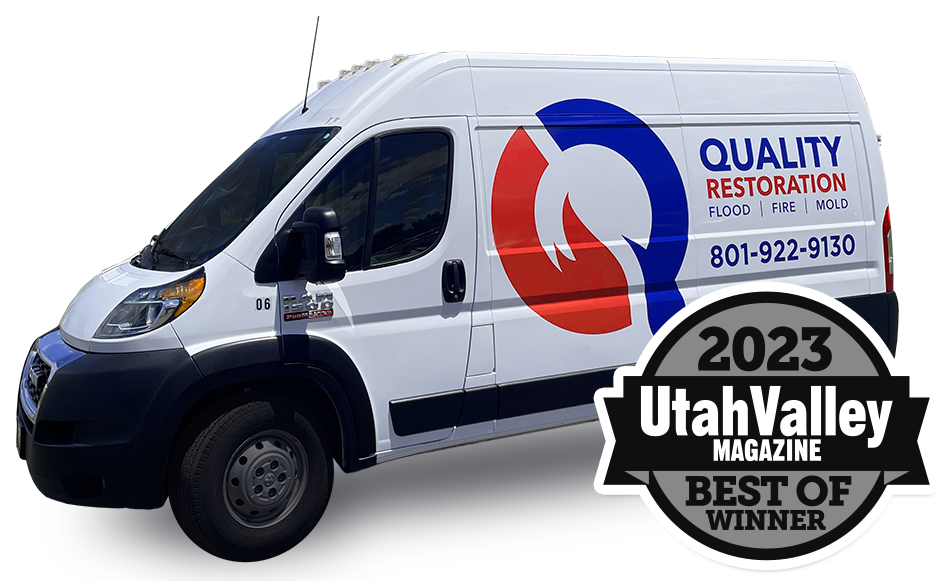In the unfortunate event of water damage in your home, the aftermath can be devastating. Not only can it wreak havoc on your property, but it can also ruin various items that hold both practical and sentimental value. Understanding what gets ruined in the aftermath of water damage is crucial for taking the necessary steps to mitigate further losses and begin the restoration process.
Key Takeaways
- Water damage can ruin furniture, upholstery, electronics, documents, personal belongings, flooring, carpets, walls, ceilings, appliances, and plumbing systems.
- Salvaging and restoring water-damaged items can help minimize further losses and preserve their value and sentimental significance.
- Immediate action is crucial in the aftermath of water damage to prevent further damage and ensure effective restoration.
- Proper moisture control is essential to mitigate the risks associated with water damage, such as mold and structural damage.
- Seeking professional help for repair, replacement, and restoration is advisable to ensure efficient and thorough recovery after water damage.
The Devastating Effects on Furniture and Upholstery
Water damage can wreak havoc on your furniture and upholstery, causing irreversible ruin. When exposed to water, these items can suffer significant damage, compromising their appearance, structural integrity, and overall value.
Various pieces of furniture are susceptible to water damage, including sofas, armchairs, dining sets, cabinets, and more. Upholstered items, such as couches and chairs, are particularly vulnerable due to their absorbent nature. Water can seep deep into the fabric, leading to mold growth, discoloration, and unpleasant odors. Additionally, wooden furniture can warp, swell, and develop unsightly stains when exposed to excessive moisture.
To salvage water-damaged furniture and upholstery, immediate action is crucial. Acting promptly can prevent further damage and increase the chances of successful restoration. Here are some steps you can take to salvage your valuable items:
- Assess the extent of the damage: Thoroughly inspect your furniture and upholstery to determine the level of damage. Identify areas that require immediate attention and prioritize your restoration efforts accordingly.
- Remove excess moisture: Use towels or a wet/dry vacuum to remove as much moisture as possible from the affected furniture. Take care not to rub or scrub vigorously, as this can cause further damage.
- Air dry: Place your furniture in a well-ventilated area to air dry. Use fans or dehumidifiers to speed up the drying process and prevent the growth of mold and mildew.
- Consult a professional: In cases of severe water damage or valuable furniture, it’s advisable to seek professional assistance. Furniture restoration experts have the knowledge, tools, and experience to salvage and restore water-damaged items effectively.
Salvaging water-damaged furniture and upholstery is not always possible, especially if the damage is extensive or if the items have been exposed to contaminated water. In such cases, replacement may be necessary to maintain a healthy and aesthetically pleasing living environment.
Remember, taking immediate action is essential when dealing with water-damaged furniture and upholstery. The sooner you address the issue, the higher the chance of successful restoration.
Now, let’s move on to the next section to explore the vulnerability of electronics to water damage and how you can protect your gadgets from ruin.
Electronics: Vulnerable to Water Damage
When it comes to water damage, electronics are particularly susceptible to the devastating effects. Water-damaged electronics can leave you with ruined gadgets and the potential loss of valuable data. It’s crucial to understand the consequences and take immediate action to minimize damage and explore repair options.
Water can infiltrate electronic devices through various entry points, such as ports, gaps, and cracks, causing internal components to short circuit and corrode. The exposure to moisture can result in malfunctioning screens, non-responsive buttons, and permanent damage to electrical circuits.
To prevent further damage to your electronics, here are some immediate steps you can take:
- Power off the device: Unplug and shut down the electronic gadget as soon as possible to prevent electrical shorts and further damage.
- Disconnect from power sources: Remove batteries, unplug chargers, and disconnect any power sources to minimize the risk of electrical surges.
- Remove external components: Take out memory cards, SIM cards, external storage devices, and any other removable parts to prevent water from seeping into them.
- Dry the device: Gently wipe off any visible water with a soft cloth, being careful not to apply excessive pressure that could push water deeper into the device.
- Avoid heat sources: Refrain from using hairdryers or applying direct heat to speed up the drying process, as it can cause further damage.
- Do not turn on immediately: Allow the device to air dry for at least 24-48 hours in a dry and well-ventilated area before attempting to power it back on.
While these steps may help minimize damage, it’s important to note that not all electronics can be restored after water damage. For valuable or essential devices, seeking professional assistance from an electrical equipment repair service is recommended.
| Steps to Minimize Damage to Water-Damaged Electronics |
|---|
| Power off the device |
| Disconnect from power sources |
| Remove external components |
| Dry the device |
| Avoid heat sources |
| Do not turn on immediately |
When seeking repair services for water-damaged electronics, choose reputable professionals with expertise in handling such cases. They can assess the extent of the damage, provide guidance on salvageable repairs, and help restore your gadgets to their optimal functioning.
Remember, taking immediate action and following the appropriate steps can make a significant difference in the recovery of your water-damaged electronics and potentially save you from losing valuable devices and data.
Damaged Documents and Personal Belongings
When faced with water damage, one of the most distressing experiences is the potential loss of important documents and personal belongings. Whether it’s cherished family photographs, legal papers, or sentimental mementos, the impact can be devastating.
Water-damaged documents and ruined personal belongings require immediate attention and careful handling to salvage what is salvageable and restore their value.
To begin the process of salvaging your water-damaged documents, it’s important to prioritize their preservation. Start by carefully separating any wet or damp papers and placing them on a clean, flat surface. Use blotting paper or towels to absorb excess moisture, gently pressing them against the documents without rubbing or causing further damage.
To avoid mold growth, it’s crucial to dry the documents as quickly as possible. You can utilize specialized document drying techniques or consult a professional document restoration service to ensure optimal results.
Remember, time is of the essence when it comes to salvaging water-damaged documents.
When it comes to ruined personal belongings, the process of restoration depends on the nature of the items affected. Soft items such as clothing, fabric accessories, or stuffed toys may undergo a thorough cleaning and drying process to prevent further damage and potential mold growth.
Hard, non-porous items like jewelry, ceramics, or glassware might require professional cleaning or restoration services to repair any damage caused by water exposure.
Restoring the value and sentimental significance of water-damaged items is essential to recovering from the aftermath of water damage. Seeking professional assistance from experienced restoration specialists will increase the chances of successfully salvaging and restoring your important documents and personal belongings.
Remember, taking immediate action and consulting experts in the field can make a significant difference in saving what matters most to you.
| Steps for Salvaging Water-Damaged Documents |
|---|
| 1. Separate wet or damp documents from others |
| 2. Place them on a clean, flat surface |
| 3. Use blotting paper or towels to absorb excess moisture |
| 4. Dry the documents as quickly as possible to prevent mold growth |
| 5. Consider specialized document drying techniques or consult professional restoration services |
Flooring and Carpets: Bearing the Brunt of Water Damage
When it comes to water damage, one of the areas in your home that bears the brunt of the impact is the flooring and carpets. Whether it’s a burst pipe, a severe storm, or a leaky appliance, water can wreak havoc on these essential elements.
Water-damaged flooring can lead to numerous issues, including warping, buckling, and staining. The moisture seeps into the materials, causing them to lose their stability and integrity. Over time, if left untreated, this can result in the need for extensive repairs or even replacement.
Ruined carpets are another common consequence of water damage. When carpets are exposed to excessive moisture, they become breeding grounds for mold and mildew. These microbes not only degrade the carpet fibers but also pose serious health risks to you and your family.
Fortunately, there are options available for restoring and replacing water-damaged flooring and carpets. Depending on the extent of the damage, restoration professionals can employ various techniques to dry out the affected areas and salvage as much as possible.
In cases where restoration is not feasible, replacement becomes necessary. This is particularly true if the damage has compromised the structural integrity of the flooring or if there are health concerns due to mold growth.
Restoration and replacement of water-damaged flooring and carpets should be carried out promptly to prevent further issues and ensure the safety and comfort of your home. Seeking the expertise of professionals in water damage restoration can help you navigate through the process smoothly and efficiently.
The Destructive Effect on Walls and Ceilings
When it comes to water damage, walls and ceilings are often the most visibly affected areas in your home. The presence of water can quickly lead to structural issues and ruin the aesthetics of your living space. Understanding the destructive effect of water damage on walls and ceilings is crucial for taking immediate action to mitigate further damage and ensure the safety and integrity of your home.
Water-damaged walls are particularly vulnerable to deterioration and can suffer from peeling paint, warping, discoloration, and even mold growth. The moisture seeps into the porous materials, compromising their strength and stability. Over time, if left unaddressed, water-damaged walls can weaken the structure of your home and pose a potential safety hazard.
Ruined ceilings are another common consequence of water damage. The excess moisture can cause the ceiling materials to sag, crack, or collapse. This not only compromises the structural integrity of your home but also creates an unsightly appearance. Moreover, water-damaged ceilings create an ideal breeding ground for mold and mildew, which can have adverse health effects.
To prevent further damage and ensure moisture control, it is essential to address water-damaged walls and ceilings promptly. Here are some steps you can take:
- Identify the source of the water intrusion and fix any leaks or plumbing issues.
- Remove any damaged materials, such as wet drywall or ceiling panels, to prevent further deterioration.
- Dry out the affected areas thoroughly using dehumidifiers, fans, and proper ventilation.
- Inspect for mold growth and take appropriate remediation measures if necessary.
- Repair and restore the walls and ceilings using appropriate materials and techniques.
By addressing water-damaged walls and ceilings promptly, you can minimize the risk of further damage and ensure the long-term integrity of your home. Remember, moisture control is key to preventing structural issues and maintaining a healthy living environment.
| Signs of Water-Damaged Walls | Preventive Measures |
|---|---|
| Peeling or bubbling paint | Fix leaks promptly |
| Discoloration or stains | Ensure proper ventilation |
| Warping or buckling | Invest in moisture barriers |
| Mold or mildew growth | Regularly inspect and maintain gutters |
Appliances and Plumbing: Prone to Ruin
When it comes to water damage, appliances and plumbing systems are particularly vulnerable. The impact of water can be devastating, leading to costly repairs or even replacements. Understanding the potential consequences and exploring your options for repair and replacement is crucial in mitigating further damage.
Water-damaged appliances pose a significant risk to your home. Whether it’s a malfunctioning dishwasher, a leaky washing machine, or a flooded refrigerator, the damage can be extensive. Water can seep into electrical components, causing short circuits and rendering your appliances useless. Not only can this disrupt your daily routines, but it can also lead to expensive repairs or replacement costs.
Plumbing systems are also prone to ruin when exposed to water damage. Leaking pipes, burst water heaters, or damaged sewer lines can result in significant structural damage to your home. The excess moisture can weaken the foundation, promote mold growth, and compromise the integrity of your walls and ceilings. Addressing plumbing issues promptly is essential to prevent further destruction and maintain a safe living environment.
Consequences of Water-Damaged Appliances and Plumbing
The consequences of water-damaged appliances and plumbing extend beyond the immediate inconvenience. Here are some potential issues you may encounter:
- Electrical hazards: Water and electricity do not mix well. Water-damaged appliances can pose safety risks, such as electrical shocks or fires.
- Mold and mildew growth: Excess moisture from water damage provides an ideal environment for mold and mildew to thrive. Apart from being unsightly, mold can also cause respiratory problems and allergies.
- Structural damage: Leaking pipes or appliances can weaken the structural integrity of your home, leading to costly repairs and compromising its overall value.
- Health risks: Standing water and excess moisture can create a breeding ground for bacteria and other pathogens, posing health risks to you and your family.
Repair and Replacement Options
When dealing with water-damaged appliances, it’s crucial to act quickly. Here are the steps you can take:
- Disconnect the appliance from the power source to avoid any further electrical damage.
- Remove any standing water or excess moisture to prevent mold growth and further deterioration.
- Contact a professional appliance repair technician to assess the extent of the damage and determine if repair is feasible.
- If repair is not possible, consider replacing the damaged appliance with a new, water-resistant model.
When it comes to plumbing, addressing the issue promptly is crucial. Here’s what you can do:
- Shut off the main water supply to prevent further damage.
- Contact a licensed plumber to inspect and repair any leaks or malfunctioning plumbing fixtures.
- Consider upgrading your plumbing system with water-resistant materials or installing leak detection devices for added peace of mind.
By taking immediate action and seeking professional assistance, you can minimize the impact of water damage on your appliances and plumbing systems. Remember, prevention is always better than dealing with the aftermath of water damage. Regular maintenance, inspections, and proactive measures can go a long way in safeguarding your home against potential disasters.
Conclusion
Water damage can have devastating consequences on various items in your home, from furniture and upholstery to electronics, documents, and personal belongings. It is crucial to take immediate action in the aftermath of water damage to minimize further losses.
Salvage and restoration efforts play a significant role in preserving the value and sentimental significance of your possessions. Whether it’s through professional restoration services or DIY methods, salvaging water-damaged items can bring back their functionality and restore their aesthetic appeal.
Remember, time is of the essence when dealing with water damage. The longer you wait, the higher the chances of irreparable damage and mold growth. Take proactive steps to eliminate excess moisture, dry out the affected areas, and prevent further damage to your home.
If the damage is extensive or beyond your capabilities, consider consulting with professionals who specialize in water damage restoration. They have the expertise and tools necessary to assess the situation, mitigate further damage, and restore your home to its pre-damage condition.
FAQ
What items are typically ruined after water damage?
Water damage can have a devastating impact on a variety of items in your home. Commonly ruined items include furniture, upholstery, electronics, documents, personal belongings, flooring, carpets, walls, ceilings, appliances, and plumbing systems.
How does water damage affect furniture and upholstery?
Water-damaged furniture and upholstery can suffer from warping, discoloration, mold growth, and structural damage. Restoration and salvage efforts may be possible depending on the extent of the damage and the materials involved.
Are electronics prone to water damage?
Yes, electronics are vulnerable to water damage. Exposure to moisture can cause short circuits, corrosion, and irreparable damage. It is essential to take immediate steps to minimize damage and seek professional repair services.
What should I do if my important documents and personal belongings are water-damaged?
If your important documents and personal belongings are water-damaged, you should prioritize drying them out and salvaging whatever is possible. Depending on the extent of the damage, restoration methods such as freeze-drying, air-drying, or professional services may be necessary.
How does water damage affect flooring and carpets?
Water damage can cause swelling, warping, buckling, and mold growth in flooring materials such as wood, laminate, and tile. Carpets are highly susceptible to water damage and can become breeding grounds for mold and bacteria. Restoration and replacement options should be explored.
What are the risks associated with water-damaged walls and ceilings?
Water-damaged walls and ceilings can lead to structural instability, mold growth, and compromised indoor air quality. It is crucial to address the moisture issue promptly and seek professional assistance for repairs and restoration.
Can water damage ruin appliances and plumbing systems?
Yes, water damage can ruin appliances and plumbing systems. Electrical components can be damaged, resulting in malfunctions and potential safety hazards. Plumbing systems can suffer from leaks, corrosion, and contamination. Repair or replacement may be necessary.
What is the importance of taking immediate action after water damage?
Taking immediate action after water damage is crucial to minimize further losses. Time is of the essence in drying and salvaging affected items and preventing additional damage such as mold growth, structural issues, or irreversible damage to electronics.
How can salvage and restoration efforts minimize losses after water damage?
Salvage and restoration efforts aim to recover and restore water-damaged items to their pre-damage condition. These efforts can help preserve the value and sentimentality of belongings, reduce replacement costs, and minimize the inconvenience caused by the aftermath of water damage.




















